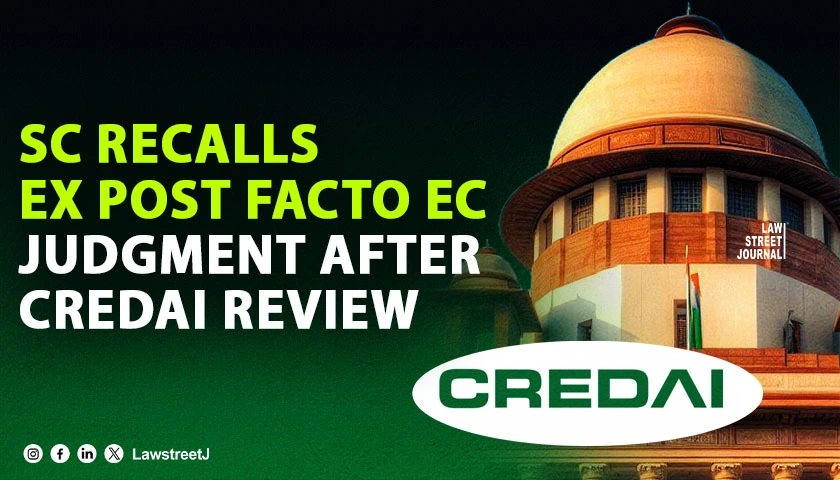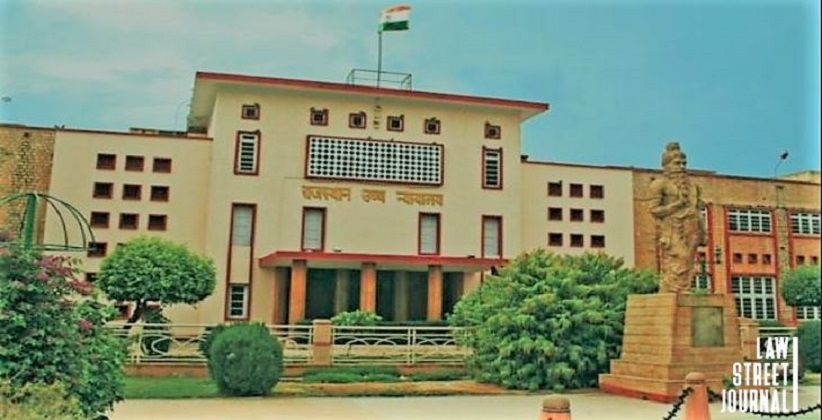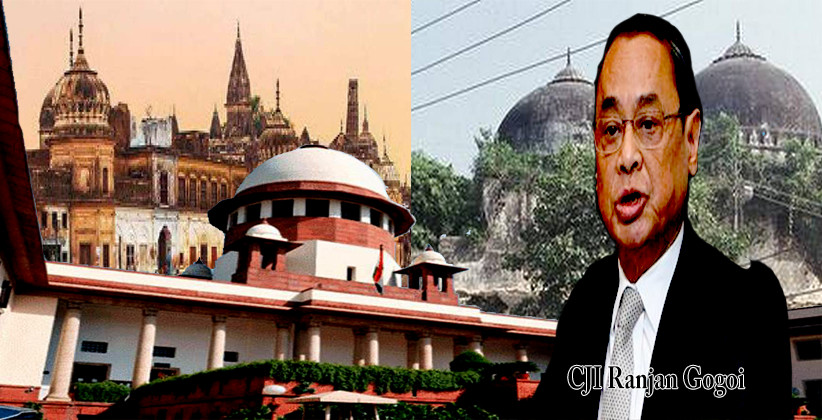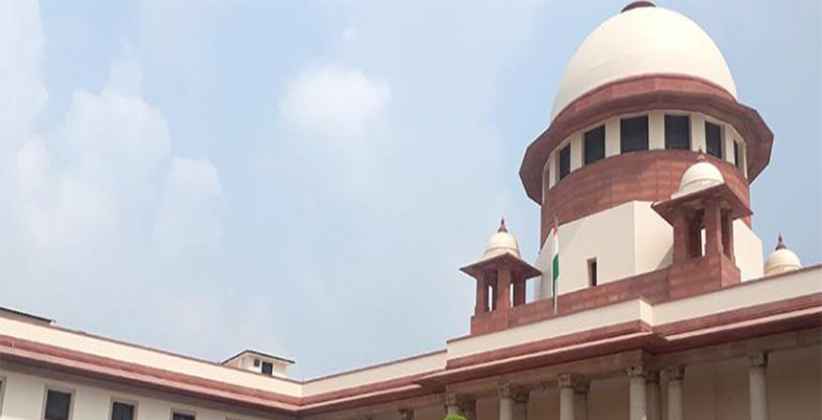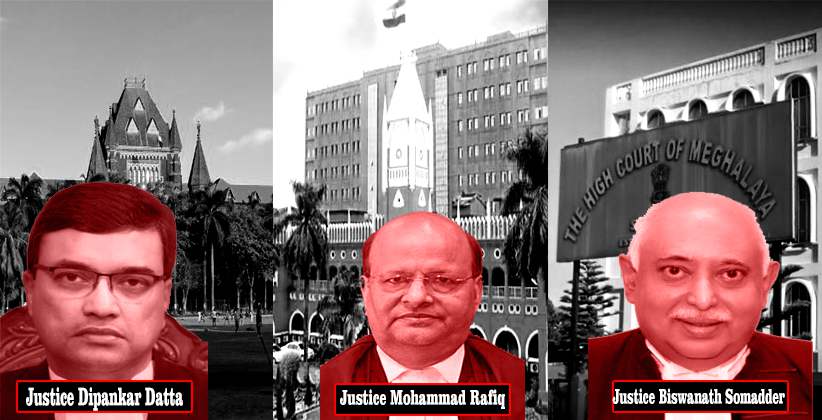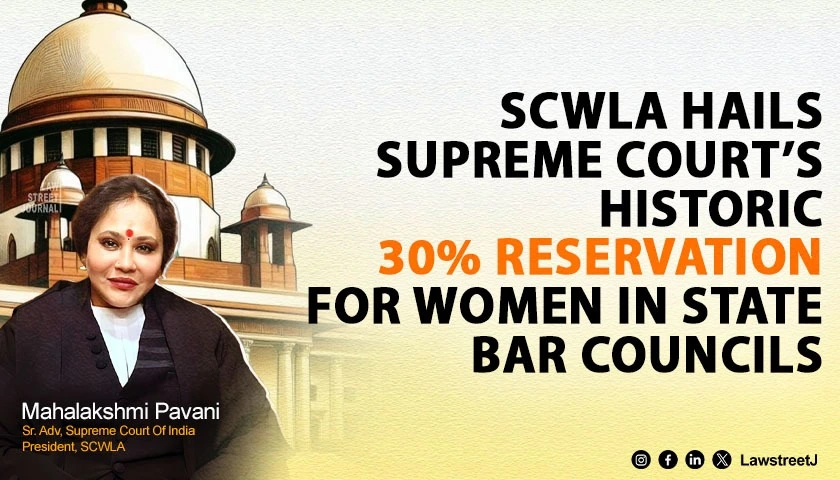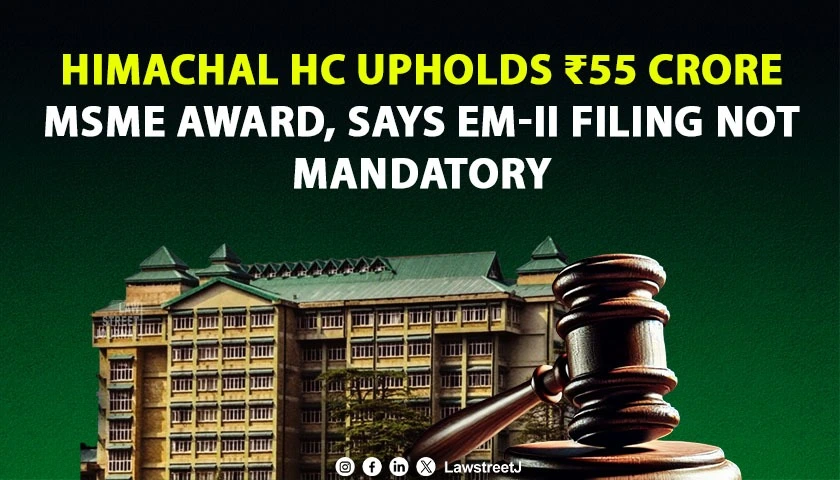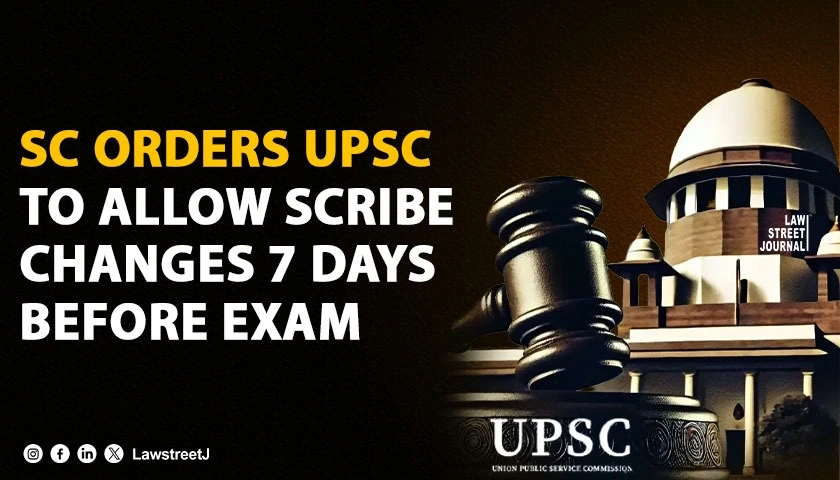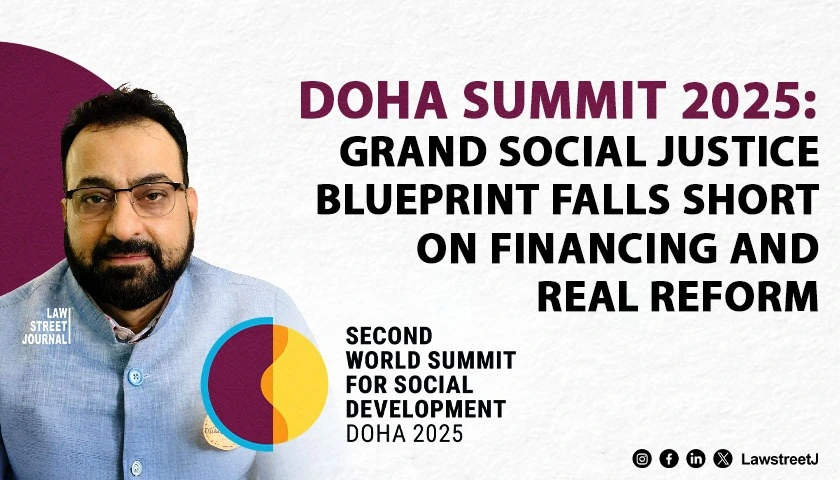New Delhi: Supreme Court Recalls Key Environmental Judgment on Ex Post Facto Clearances, Restoring Petitions for Reconsideration.
In a divided decision that has sent ripples through India’s real estate and infrastructure sectors, the Supreme Court of India has recalled its landmark judgment of May 16, 2025, in Vanashakti v. Union of India, which had declared the grant of ex post facto Environmental Clearances (EC) illegal.
The review, filed primarily by the Confederation of Real Estate Developers of India (CREDAI), challenged the May judgment (referred to as “JUR” in court documents), which had struck down the Environment Impact Assessment Notification of 2017 (2017 Notification) and the Office Memorandum of 2021 (2021 OM). Both instruments provided mechanisms for projects that had commenced work without prior EC to seek regularisation.
The majority opinion, led by Chief Justice of India B.R. Gavai and supported by Justice K. Vinod Chandran, allowed the review petition on several key grounds:
- Conflict with Co-ordinate Benches:
The JUR was found to have been rendered per incuriam—through inadvertence or ignorance—of earlier, binding judgments of co-ordinate benches, specifically D. Swamy v. Karnataka State Pollution Control Board and Pahwa Plastics Private Limited v. Dastak NGO. Both cases had implicitly or explicitly upheld the validity and application of the 2017 Notification and 2021 OM in certain circumstances.
- Incomplete Consideration of Precedents:
The Chief Justice noted that the JUR relied on select paragraphs from earlier rulings such as Common Cause v. Union of India, Alembic Pharmaceuticals Limited v. Rohit Prajapati, and Electrosteel Steels Limited v. Union of India, while overlooking other paragraphs in the same judgments where a “balanced approach” was adopted, allowing projects to continue subject to heavy penalties and environmental restoration costs.
- Devastating Economic Consequences:
A central concern was the “devastating effects” of the JUR, which, if allowed to operate, would mandate the demolition of completed or near-completion projects—including major public utility projects like the AIIMS hospital in Odisha (962-bed capacity) and the greenfield airport in Vijayanagar, Karnataka—representing an estimated loss of approximately ₹20,000 crore in public funds.
- Counter-Productive to the Environment:
Justice Gavai argued that compelling demolition and subsequent reconstruction of projects that are otherwise legally permissible would result in “creating even more pollution” through debris and wasted resources—an outcome deemed “counter-productive to the public interest.”
The Chief Justice stated:
“I am, therefore, of the considered view that the effect of JUR would be that though projects, such as the ones referred to hereinabove, which are otherwise permissible in law, and for which the project proponents would be entitled to apply for an EC, they would have to be demolished and only thereafter, upon obtaining the EC, the project proponents can be permitted to construct the project again.”
Justice Ujjal Bhuyan penned a strong dissenting opinion, arguing that “no case for review has been made out” and that the review petition should be dismissed.
Justice Bhuyan contended:
- Judicial Precedent on Ex Post Facto EC:
He affirmed that the correct, binding ratio from Common Cause and Alembic Pharmaceuticals is that “the concept of ex post facto EC is completely alien to environmental jurisprudence” and an “anathema” to environmental law. He argued that the subsequent decisions—Electrosteel, Pahwa Plastics, and D. Swamy—took a “complete u-turn” and were themselves per incuriam, making them non-binding.
- The Principle of Non-Regression:
Justice Bhuyan invoked the principle of non-regression, stressing that the State should not reverse or dilute existing environmental protection standards. He criticised the majority view for endorsing a “false narrative… pitting environment against development,” calling it a “step in retrogression.”
- Validity of the 2021 OM:
He questioned the continuing validity of the 2021 OM, noting that the 2017 Notification was introduced as a “one-time measure” with a limited window ending in April 2018. Since the Ministry of Environment, Forest and Climate Change (MoEF&CC) did not file a review petition, the government remained bound by its earlier assurance.
The Supreme Court has recalled the judgment and final order dated May 16, 2025. The original writ petitions and the related appeal are now restored for fresh consideration by a newly constituted Bench, which will now have to re-evaluate the core issue of whether the State can regularise environmental violations after a project has already commenced or been completed.
The decision offers temporary relief to builders, developers, and public sector undertakings that had been racing to obtain clearances under the challenged notifications, but leaves the long-term legality of ex post facto environmental clearances unresolved.
Case Details:
Case Name:
Confederation of Real Estate Developers of India (CREDAI) v. Vanashakti and Another
Review Petition (C) Diary No. 41929 of 2025 in Writ Petition (C) No. 1394 of 2023
Bench:
CJI B.R. Gavai, Justice Ujjal Bhuyan, and Justice K. Vinod Chandran
(Majority: Gavai, CJI & Chandran, J.; Dissent: Bhuyan, J.)
Petitioner/Applicants:
Shri Tushar Mehta, Solicitor General (for SAIL);
Shri Kapil Sibal, Senior Counsel (for State of Karnataka);
Shri Mukul Rohatgi, Senior Counsel (for CREDAI)
Respondents/Original Petitioners:
Shri Gopal Sankaranarayanan, Senior Counsel;
Shri Sanjay Parikh, Senior Counsel;
Shri Raju Ramachandran, Senior Counsel;
Shri Anand Grover, Senior Counsel;
Ms. Anitha Shenoy, Senior Counsel.

